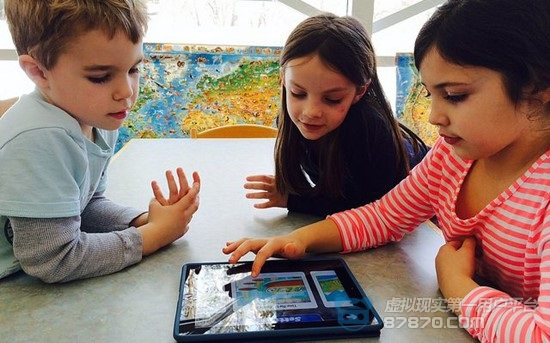
VR education
The sensor Sensorama, which was invented by photographer Morton Heilig in the 1950s, is the world's first virtual reality (VR) device, and the concept of VR head-light has even begun to emerge in the 1960s. But until the 21st century, VR gradually faded its fresh coat and walked into ordinary people. Hosted games and smartphones bring VR technology to millions of households, and everyday classes are the next destination for the technology.
The question at hand is how the new technology represented by VR will revolutionize the well-known mass education. Although the answer to this question has not yet come to the fore, the potential of VR has allowed us to see an infinite number of "clues."
Immersive environment
The immersive environment is undoubtedly the gospel of foreign language learners: it allows students to naturally practice foreign languages ​​in unfamiliar contexts, thus cultivating students in the direction of native speakers.
VR is the provider of such immersive environments: stereoscopic rendering of graphics, sensitive systems constitute the external framework of the virtual world, and in more complex VR systems, students can even have their own "avatar", Ability to interact with the surrounding virtual world.
The immersive learning environment can effectively motivate students and greatly improve their learning. At the same time, high participation and natural learning methods can improve the quality of learning.
Experimental safety
The VR environment also has the ability to simulate the real world, which means that VR has unparalleled effectiveness and security in the design and inspection of new projects. For example, physical experiments can be performed by VR. Even if a student makes a calculation or a hypothesis error in the “build†physical model, the resulting “failed†VR model does not pose any real risk to the student.
On the one hand, the VR experiment can facilitate students to learn through experiments, and on the other hand, it can provide “personal protection†for experiments with security risks. In addition, students can observe the results of failed experiments in this way, thereby enhancing the understanding of the learning content.
In biology, the accurate rendering of VR can also replace the way of on-site anatomy to help students understand the biological structure.
Travel through time
Fieldwork is a useful way to help students understand new ideas and explore new environments. The historical re-emergence of historical sites allows visitors to return to the past and deepen their understanding of different historical events. However, in general, students are more subject to geographical limitations and cannot visit those historical scenes. Today, this status has changed with VR.
Although the current application of VR in education is only a breeze, it has presented a huge potential for innovation that cannot be ignored.
One of the potential is that VR allows students to reproduce any historical event through different time and space.
The same concepts apply equally in biology, botany and other natural sciences. With the help of VR, students can explore places that are dangerous in real life—such as in the Amazon rainforest or the Nile—without worrying about accidents.
interconnection
With the advancement of technology, students from different schools, states or countries can gather in the same space and contact and communicate with completely strangers, thus expanding their horizons and promoting cooperation.
[Information compiled from: thetechedvocate]
Guangzhou serika Technology Co., Ltd. , https://www.serikamedical.com